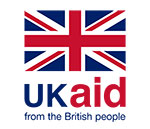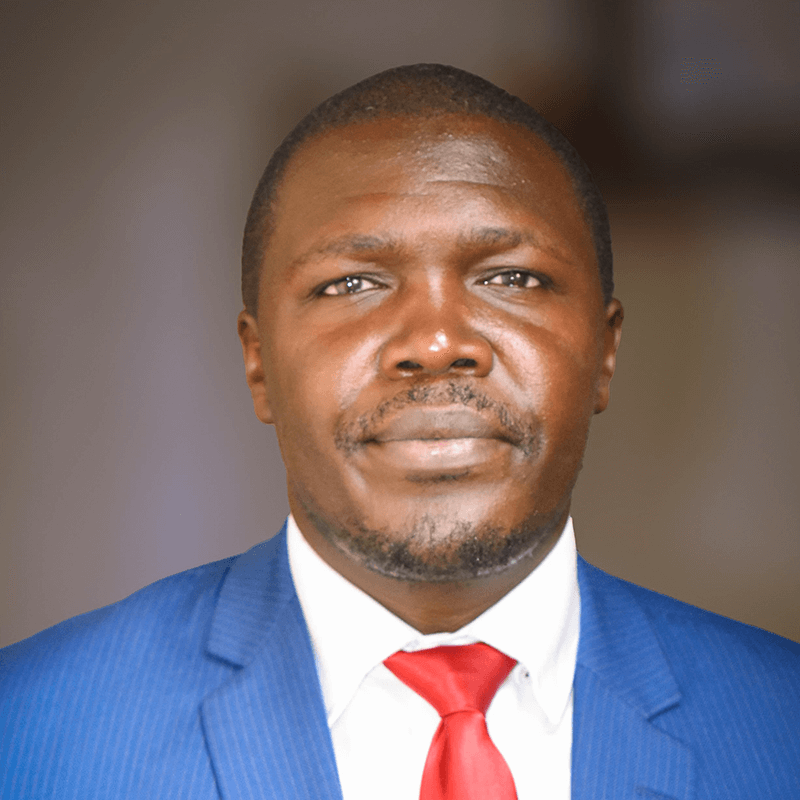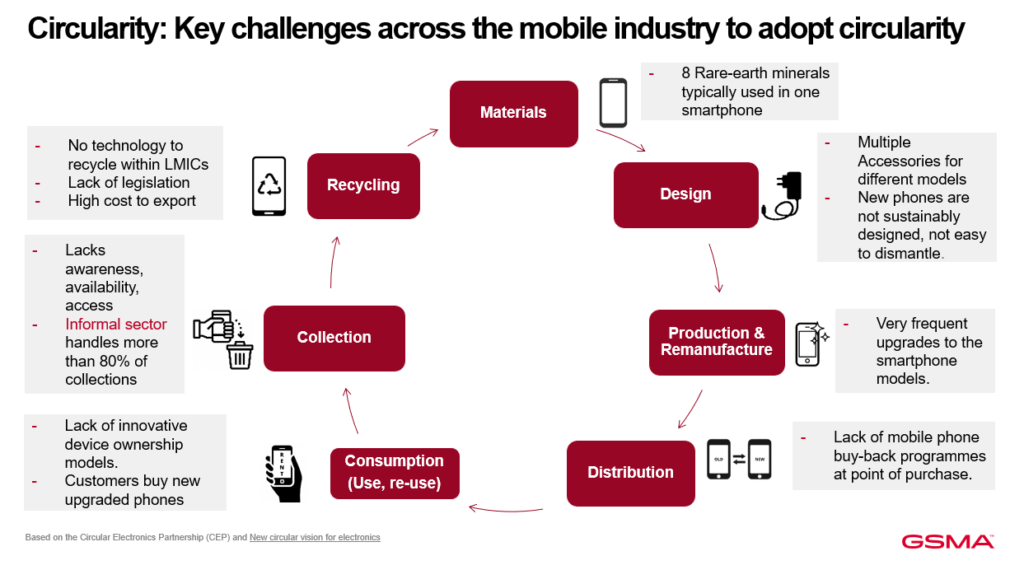Reflections from the Global Off Grid Solar Forum & Expo 2022
Between 18 and 21 October 2022, the GSMA ClimateTech joined the seventh edition of the Global Off-Grid Solar Forum and Expo in Kigali, Rwanda hosted by GOGLA (the global association for the off-grid solar energy industry) in collaboration with Lighting Global. In this blog, we summarise our learnings around the issue of circularity – a key thematic focus for the GSMA ClimateTech team.
The need for circularity
The World Bank through its 2018 publication “What a Waste 2.0: A Global Snapshot of Solid Waste Management to 2050” projects that with rising populations and income levels, the total quantity of waste generated in low- and middle-income countries (LMICs) is expected to increase significantly by 2050. Reducing emissions from solid waste is becoming more crucial with the rise of consumerism and waste generation in LMICs.
While there are growing concerns that waste management systems must prepare for extreme weather patterns, there is an even a greater worry over the nexus between the uncontrolled use of finite resources and Earth’s ability to sustain life. These sentiments align with the insights shared by the Circularity Gap Reporting Initiative (CGRI) – CGR 2022 that our collective economy consumes 100 billion tonnes of materials a year and wastes over 90%.
Managing the fastest growing waste stream in the world – e-waste
During a session titled “Creating an Effective Enabling Environment for E-Waste Management”, I shared insights on what circularity means to the GSMA and, more importantly, it’s relevance in the mobile ecosystem.
This included highlighting e-waste management challenges, GSMA ClimateTech team’s e-waste management work, the efforts made by MNOs towards building effective enabling environments for e-waste management despite the absence of policy in several jurisdictions, and GSMA’s unique position to build collaborations across sectors to leverage technology.
Circularity Carnival
I also attended a session referred to as the “Circularity Carnival” due to the growing need to go beyond the usual conference style to celebrate the work that has been done so far in the sector – sharing learnings and ideas, building new collaborations, finding new solutions and identifying the important next steps. The session focused on expanding sector activities to help catalyse support from funders and policy-makers, and driving innovation.
During the panel and group discussion with key stakeholders EnviroServe, SolarAid, d.light, IoM and Sun King, there was agreement that the key factors critical to promoting circularity in various sectors include:
- Innovative product ownership models that are aligned to circularity
- Considerations for product designs with longer lifespan which are easy to refurbish, recycle or re-use (including batteries)
- Promotion of an enabling environment for circularity by encouraging knowledge sharing, collaborations, favourable regulatory environment, and
- Availing of funds and equipment that would support start-ups on circularity.
While acknowledging the outcome of the circularity sessions, it is important to recognise that, from the very beginning, nature has shown us the best circularity models: using waste to create new things.
Circularity can be best delivered by availing of funds and investments towards improving processes throughout the value chain. UNCTAD also advises that a circular economy entails markets that give incentives to reusing products, rather than scrapping them and then extracting new resources.
At the end of the week-long discussions and engagements, the close out session delivered the key highlights of the forum’s outcomes and the lessons learnt as below:
- Advocate for favourable policy formulation and enforcement on circularity
- Build collaborations among the various sector players
- Strengthen and implement circularity enabling approaches that include strengthening reverse logistics, advocacy for product designs that can easily be recycled, re-used and help to reduce e-waste churn, alternative ownership models that promote circularity, availing recycling technologies in the LMICs.
- Open-source data can improve finance access for renewable energy projects.
- Creating sustainable value chain position is a key determinant of the right type of capital for your business.
- Aligning capital needs to investment: the fundraising process for capital (debt, equity and grants) should be made clearer and less laborious for start-up.
Our take
Thought leadership and knowledge transfer is critical in delivering tangible benefits to the communities in which we operate. This forum provided an excellent knowledge sharing and network platform, a perfect place for germinating collaborations that deliver sustainable solutions for various challenges in our society, including waste management.
Throughout the sessions I noted that there were two unique words were repeatedly used: ‘’collaboration’’ and ‘’policy’’. This means that to deliver long-term tangible results, two things remain critical: formulation of a favourable policy framework; and inter-/intra-sectoral collaborations.
Recognizing the impacts of climate change on large economies, and the important role played by circularity in climate resilience and adaptation, can no longer be ignored. Organisations like the GSMA have an ever-increasing mandate to help facilitate partnerships that leverage technology to improve circularity and to ensure that leaders, their respective businesses and ecosystems, keep a keen eye on sustainable circularity to shape our collective future. To hear more about GSMA’s work on circular economy solutions subscribe to our newsletter here.
THIS INITIATIVE IS CURRENTLY FUNDED BY THE UK FOREIGN, COMMONWEALTH & DEVELOPMENT OFFICE (FCDO), AND SUPPORTED BY THE GSMA AND ITS MEMBERS.




